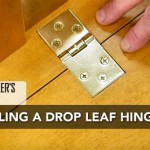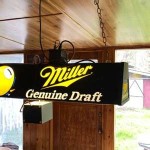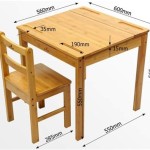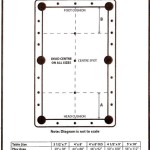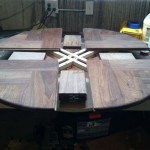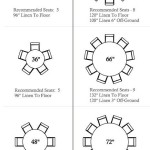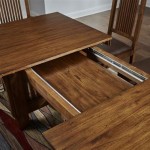What Is The Size Of A Professional Pool Table Felt?
The felt covering a pool table, often referred to as cloth, is a crucial element influencing gameplay. This woven fabric, meticulously stretched and secured, provides the smooth, consistent surface that allows billiard balls to glide and roll accurately. Understanding the appropriate size of pool table felt for professional-grade tables is essential for maintaining optimal playing conditions and ensuring longevity of the table itself. This article will delve into the specifics of professional pool table felt dimensions, exploring the factors that determine these sizes and the implications for selecting the correct material.
Pool table felt size is inextricably linked to the overall size of the pool table itself. Professional pool tables are standardized in their dimensions, ensuring a uniform playing experience regardless of location. The most common professional size is 9 feet, with variations in other sizes existing for recreational and tournament play. To understand the specific felt sizes, it’s necessary to understand the table dimensions. The playing surface of a 9-foot table measures 50 inches wide by 100 inches long. The felt must be large enough to cover this surface and extend sufficiently over the edges of the slate bed to be secured to the rails underneath.
The selection of pool table felt goes beyond simply matching the table size. The quality of the felt, fiber composition, and construction all contribute significantly to the table’s performance and the game's overall feel. Professional-grade felt is typically made from a blend of wool and nylon, offering a balance of speed, durability, and responsiveness. The weight of the felt, measured in ounces per yard, also influences its characteristics. Heavier felts tend to be more durable and resistant to wear, while lighter felts may offer faster gameplay.
Specific Felt Dimensions for Professional 9-Foot Tables
For a standard 9-foot professional pool table, the typical dimensions of the felt required are approximately 6 feet wide by 12 feet long. This provides enough material to completely cover the playing surface (50 inches x 100 inches) and allows for ample overhang to staple or glue the felt to the underside of the slate bed. The extra material ensures a tight, wrinkle-free fit, which is critical for accurate ball roll and consistent gameplay. The width allows for covering both the playing surface and the side rails, while the length provides sufficient material for the head and foot rails.
The allowance for overhang is crucial during installation. Installers carefully stretch the felt to eliminate any slack or unevenness. This tension is necessary to create the smooth, flat surface required for professional play. The excess felt is then trimmed and secured beneath the table, ensuring a clean and aesthetically pleasing finish. Insufficient felt can lead to difficulties during installation, resulting in wrinkles, creases, or an improperly secured playing surface. It is far more desirable to have excess material that can be trimmed than to fall short and risk compromising the quality of the installation.
Furthermore, variations in the precise dimensions of the slate bed can influence the amount of felt needed. Although 9-foot tables adhere to standard playing surface dimensions, slight manufacturing differences may exist. It's always advisable to measure the actual slate bed to confirm the required felt dimensions before ordering the material, especially for older or custom-built tables. This precautionary step can prevent costly mistakes and ensure a smooth installation process.
Importance of Proper Felt Installation
The quality of the felt itself is only one component of achieving a professional playing surface. Proper installation is equally critical. Even the highest quality felt will perform poorly if it is not installed correctly. This includes stretching the felt evenly, securing it tightly, and ensuring a smooth transition between the playing surface and the rails. A poorly installed felt can result in inconsistent ball roll, dead spots, and overall diminished playing quality. Professional installers employ specialized tools and techniques to achieve a flawless finish.
One common technique used by professional installers involves using a specialized felt stretcher. This tool applies even tension across the entire surface of the felt, eliminating wrinkles and ensuring a tight, consistent fit. This stretching process is crucial for optimizing the ball's roll and preventing any unwanted deviations. The felt is typically secured to the underside of the slate using staples or adhesive, carefully positioned to maintain uniform tension.
Additionally, the seams where the felt meets the cushions must be meticulously concealed. An uneven or poorly concealed seam can disrupt ball travel and detract from the overall aesthetic of the table. Professional installers carefully trim and tuck the felt to create a seamless transition, ensuring a smooth and uninterrupted playing surface. The pockets also require careful attention during installation to ensure they are properly aligned and offer a consistent ball capture.
Felt Materials and Their Impact on Size Considerations
The type of material used to manufacture the felt can also influence the size requirements. Different materials possess varying degrees of stretch and flexibility. For example, a felt made with a higher percentage of wool may stretch more readily than a felt made primarily of nylon. This difference in stretch can affect the amount of overhang needed during installation. Felts that stretch more may require slightly less extra material, while less flexible felts may necessitate a larger allowance.
Moreover, the weight of the felt, measured in ounces per yard, can play a role. Heavier felts tend to be thicker and more durable, but they may also be less pliable. Installing a heavier felt may require more effort and precision, potentially necessitating a slightly larger piece of material to account for the increased stiffness. Conversely, lighter felts are generally easier to manipulate but may be more prone to wear and tear. Professional installers consider these factors when selecting and installing pool table felt.
The color of the felt can also subtly affect its properties. Darker-colored felts may absorb more heat, potentially influencing their stretch and flexibility. While this effect is generally minimal, it is something that experienced installers may consider when working with different colors of felt. Furthermore, the dye used to color the felt can sometimes affect its texture and feel, impacting the speed and responsiveness of the playing surface.
Ultimately, selecting the correct size and type of pool table felt is a critical decision that impacts the table’s performance, longevity, and overall aesthetic appeal. Understanding the specific dimensions required for a professional 9-foot table, as well as the factors that influence felt characteristics, enables informed choices that contribute to an optimal playing experience.

Custom Pool Table Felt With Matching Printed Rail Cloth

Pool Table Size Chart Moving The Experts

Pool Table Felt Colors San Francisco

Championship 3020 Pro Am Table Cloth Optional Colors Seybert S Billiards Supply

Professional Billiard Pool Table Cloth Mat Cover Felt Accessories For 7 8 9ft

Room Size Pooltables Com

What Size Is A Professional Pool Table Home Leisure Direct

Custom Pool Table Felt With Matching Printed Rail Cloth

Lilac Pro Am Championship Cloth

Professional Billiard Pool Table Cloth Mat Accessories 7ft 8ft 9ft Blue Business Supplies

